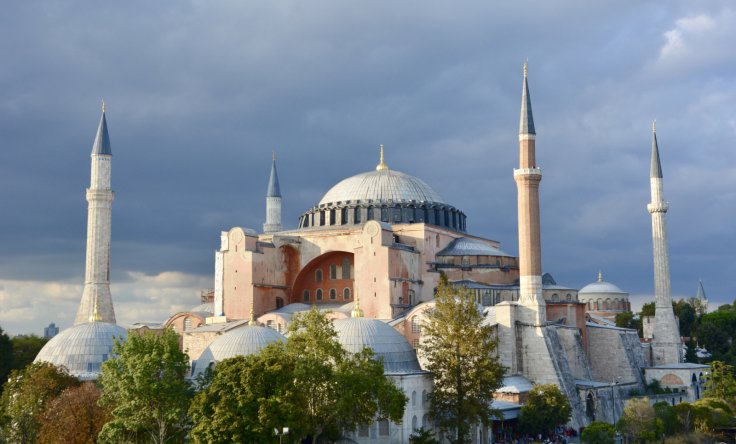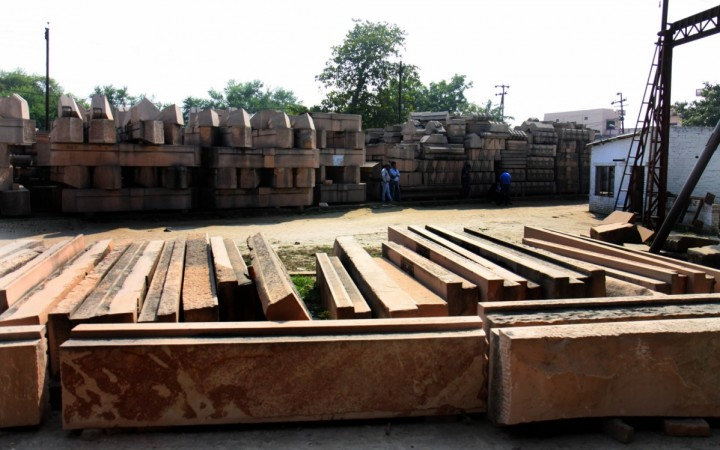For students of religious conflicts, the present times are very exciting. First, the Hagia Sophia Museum in Istanbul got reconverted into a mosque by the Turkish government. Next week, the construction of a Hindu temple will formally begin in India at a disputed site where a mosque had stood, following the resolution of a long-drawn case at the nation's supreme court.
This site, located in the historically and religiously important town of Ayodhya in Uttar Pradesh province, is regarded by Hindus as the birthplace of Lord Ram, one of the most prominent incarnations of Vishnu, the prime deity of the Hindu pantheon. The site was supposedly taken over by the 16th century Mughal invader Babar and turned from a temple to a mosque.

The mosque became a center of dispute and was demolished by a large gathering of fanatical followers of right-wing Hindu organizations in 1992. After decades of litigation going back to British times, the Supreme Court of India gave a verdict last year, handing the possession of the site to Hindus, accepting their claim, while also describing the act of the destruction of the mosque as criminal.
On August 5, PM Prime Minister Narendra Modi will attend a religious ceremony at the sacred spot to mark the beginning of the construction of a grand Ram Temple that Hindus have demanded for a long time.
But Hagia Sophia and Ayodhya are not the only places on the planet where disputes over possession have raged between religious communities. Several other sites, some prominent, some not so, are still fought over by different sects and even faiths. Let's look at some of such examples.
Dome of the Rock/Al Aqsa Mosque
This monument in Jerusalem is always brimming with tension. The 'rock' which is housed under the 'dome' is extremely sacred for both Jews and Muslims. The spot of the rock is regarded by followers of both faiths as the place where God created the world and Adam, the first man.

It is also regarded as the rock on which Abraham, the progenitor of all the three religions from the region – Judaism, Christianity and Islam – was about to sacrifice his son Isaac. The followers of Judaism believe this was the spot where their Second Temple stood. It is the holiest site for Jews as they pray in the direction of the rock.
Muslims regard it as among their most sacred sites also. The rock is believed to be the one from which Prophet Mohammad ascended to heaven in his famous Night Journey or Mi'raj. The Islamic believers call the entire enclosure al-Haram al-Sharif as it contains the sacred Al-Aqsa mosque also.
Presently, the whole complex around the dome is in the possession of the state of Israel but tensions remain high. Friday is an especially sensitive day owing to its importance for Muslims. Both religions claim to have a greater right to it.
Church of the Holy Sepulchre
The contest over this church is not inter-faith but intra-faith. This church is considered to stand at the site of Jesus Christ's crucifixion and subsequent entombment. Since Christianity has many different sects, the dispute is over which one gets the precedence in managing this site and praying in it.
Luckily, as per an agreement among various sects of Christian faith, given legal sanctity by Ottoman rulers who had possession of the territory, all sects have peacefully divided their responsibilities and rights. All of them have their own periods for prayers, be they Catholics or Greek Orthodox.

This agreement is known as the Status Quo and was brought into effect in 1757 and was further strengthened by treaties in Europe. Though the sects manage to co-exist peacefully, there have been occasions when scuffles have broken out.
Cordoba Cathedral
This place has a very complicated history. In the 7th century, a Visigothic Catholic church stood at the spot. This was replaced by the Grand Mosque of Cordoba when the Arabs conquered Spain. In the 13th century, as Cordoba was regained by Christians during the Reconquista, the building was converted into a Church again. In the 16th century, a Church nave was built right in the center of the mosque's building.
Since then, the Cordoba Cathedral has been a place of worship for Christians and Muslims are not allowed to pray. Recently, the Emir of Sharjah in the United Arab Emirates (UAE) demanded that this place too be handed back to Muslims, like Hagia Sophia.
Lahore Gurudwara/Mosque
The early history of Sikhism is replete with martyrs who sacrificed their lives while staying true to their creed. The Gurudwara Shahidi Asthan in Lahore marks the location of one such great sacrifice.
Bhai Taru Singh was put to a gruesome death by the officials of the Mughal government for refusing to shave his head (it is against Sikh religious principles to do so). The Gurudwara commemorates the spot where the Shahidi (martyrdom) took place.
However, the local authorities of Lahore are now claiming that the spot was originally a mosque and plan to reconstruct it in place of the existing Sikh temple. This has drawn a sharp response from the Indian government, which has communicated its displeasure to the Pakistan government.









